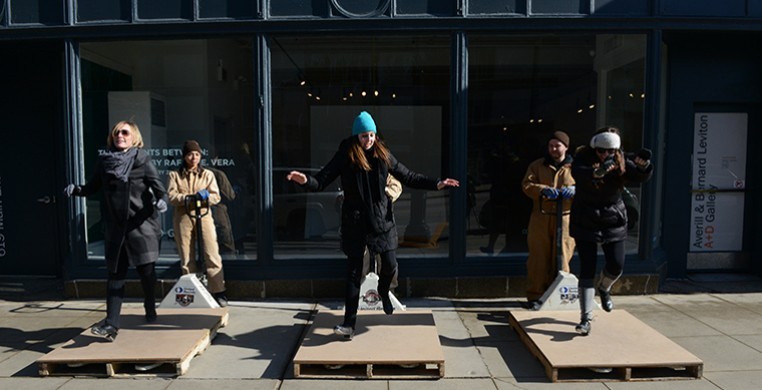We all know the story of Henry VIII. Or do we? JorsTAP, Chicago’s all-female tap ensemble, took a much more comedic approach to the king’s lustful appetites, the highlight of the company’s four-piece program that played at the Athenaeum Theatre April 24-26. “Henry the VIII & his six tap dancing wives”—a collaborative work from company director Kendra Jorstad and artist David Lee Csicsko—evoked the light-hearted tapping traditions of, say, Fred Astaire, relying on flirtatious persuasion, much in the way you’d imagine a group of young girls would compete for the affections of a popular boy in school, however clichéd it may seem.
Harder to grasp was that this particular group of Astaires, each of them technically gifted, made the most of such fateful lore. For the history purists in the crowd, these tap-dancing spouses felt like the skim-milk version of a complicated past, skewing its drama in favor of a happy ending that leaves all six wives’ heads intact.
So six tap-dancing wives, each of them caricatures inspired by the ladies of the monarch’s six marriages, were the basis for the second half of jorsTAP’s mixed bag of works in “Tarantism,” a program that was neither fragile nor fully formed. The star players found solid footing in three pieces prior to the main attraction, a palette cleanser before the entrée. Short and sweet, “Listen,” “Rising and Falling,” and “Tip Tap Tow” played well, given their brevity. Conceptually, there were few differences yet the skill was evident. I found myself thinking back to the final piece of the first half, “Tip Tap Tow,” which featured the dancers carrying and shifting square platforms of wood. They slid, stacked and tapped their way along a self-made jungle gym that caught the attention of more than one audience member with its loud, clashing strikes. While not overly complex, the tactic seemed a fresh variation of the traditional.
During a pause between pieces, Jorstad introduced herself, praising the dancers for their dedication. She spoke about “Henry,” the most substantive of all four works during the hour-long program. Jorstad’s collaboration employed the skill of Csicsko, an artist/painter who, in subtle, behind-the-scenes-fashion, draws individual portraits of the dancers onto a black wall, a version of each woman as they tried to entice a placid Henry, played by Chris Radzak, in a series of solos. Radzak absorbs these advances with uncompromising patience. In fact, he hardly moves until his demise, which looked something like exhaustion. That’s when the champagne corks (literally) pop and the laughs flow freely; the king is gone so the real party can begin. It’s a random party at that, which includes a French beret-wearing Csicsko.
For now, “Henry” is too reliant on its gimmicks than its chosen plot. But despite its flippant displays of action, Jorstad’s creation poses interesting questions. Her goal, it would seem, is to speak to liberating principles, however oblique they may be. In this case it’s easy to imagine that sense of liberation belonging to the tap dancing wives. For something that showed bits of potential, liberation felt like a good start.

